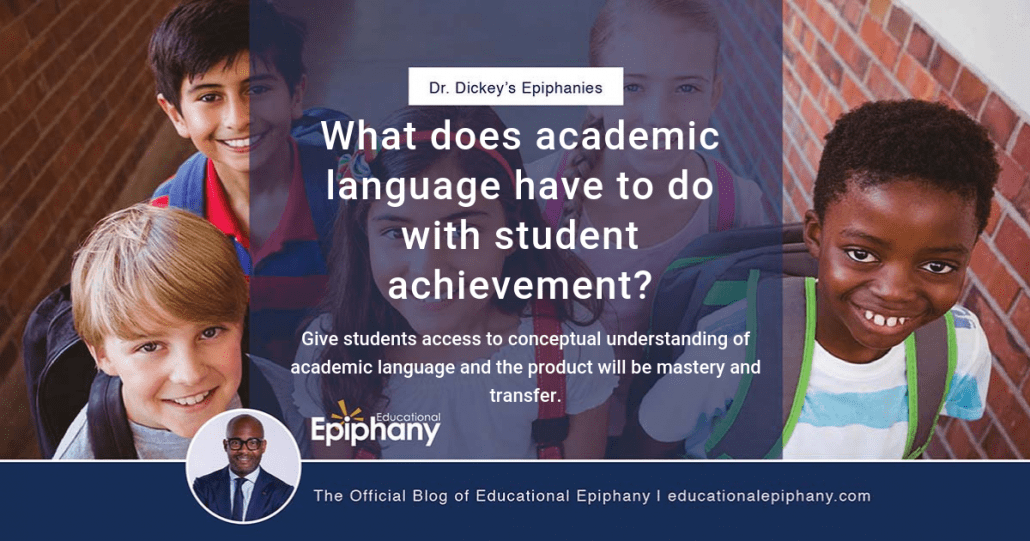As you might imagine, the core content standards for English/language arts, mathematics, social studies, and science are dense in academic language. For this reason, it is inappropriate to expect the vast majority of our students, let alone students who are “striving” to read and comprehend consistent with developmental expectations, to demonstrate proficiency without access to instruction characterized by a focus on conceptual understanding of the language of the content standards.
For example, in English 11 and 12, students are expected to analyze U.S. seminal documents of historical and literary significance with a focus on themes, purposes, and rhetorical features.
But what in the world does that mean?
Here is the epiphany.
There is an imperative that students, teachers, as well as those supporting and evaluating teachers to have calibrated understanding of the terms that comprise each content standard. Why? The writers of high-stakes end-of-grade and end-of-course assessments make use of their common understanding of the academic language to compose content-specific exams (grades 3-12) that yield valid and reliable scores that are subsequently used to make assumptions about our students’ aptitude (whether we like it or not).
Now back to the academic language in the aforementioned eleventh/twelfth grade standard:
- Analyze is defined as the process of separating material into its constituent element or parts.
- Seminal does not refer to the absolute first of its kind. Instead, it refers to documents that strongly influence documents that follow it of a similar nature and function.
- Historical significance refers to the extent to which individuals, events, and ideas referenced in a document (from the past) impact the subsequent presentation of information regarding the same or related individuals, events, and ideas.
- Literary significance is defined as the extent to which style, word choice, and literary elements employed by an author to accomplish his/her purpose for writing influences future works of literature or informational texts.
- Theme is defined as a dominant or unifying idea of a given text or portion of a text.
- Purpose answers the question, “Why did the author compose the text?”
- Rhetorical features is defined as aspects of a text aligned with the fulfillment of the purpose of a text and its author’s real-time awareness of and response to composing for a particular audience.
I know exactly what you are thinking right now, and you are right! We have work to do to ensure that students have equitable access to the academic language of the content standards. And why? It’s the language of the assessment and therefore the chief barrier to improvements in student achievement.
The language of the content standards is finite; and since it is finite, we can resolve the access gap. But how:
- Your curricula K-12 should include operational definitions of tier II (general) and tier III (content-specific) academic language.
- Teachers and school leaders should refrain from making assumptions about students’ knowledge of academic language. You would be surprised by the number of students who do not are not conversant in the academic language of the standards. Just randomly select a few students to define a term or two in the objective posted on the board and see what they say.
- Teachers should refrain from watering down the academic language and instead, expose students to the language. The children can handle it. They are sponges. I met an African American kindergartener in Louisiana, in a school that I supported last year, who told me that she was composing and decomposing composite figures. When I asked her to define the academic language, she was spot on!
- Reinforce and reassess students’ conceptual understanding of the academic language of the posted objective each day. If you have taught for any extended period of time, you know that you relate information to students on Monday, and ask them to recall it on Tuesday, only to find that they did not retain the information. And by the way, reinforcing students’ knowledge of academic language cannot be done by using the unfamiliar word in a sentence or copying terms and definitions from a glossary – that’s instructional malpractice.
Let’s continue the conversation.
Donyall D. Dickey, Ed.D.

